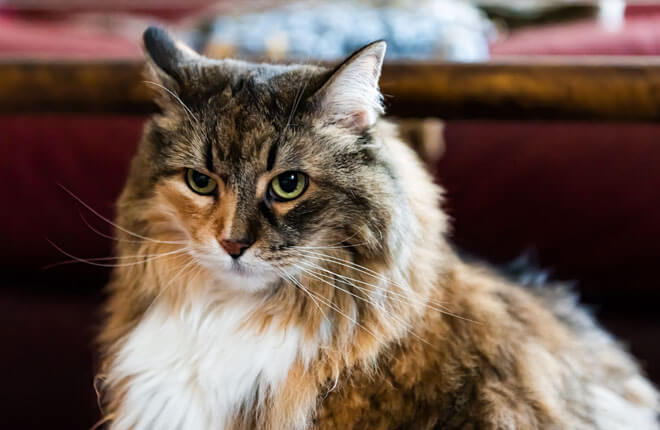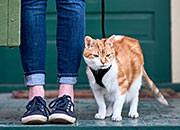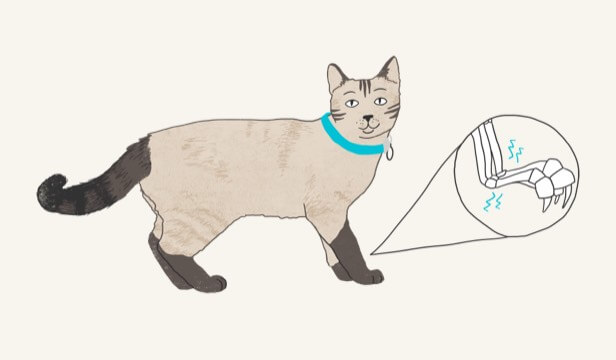Cat facial expressions may be subtle and hard to spot by the untrained eye. But armed with a little information, you can use your cat’s ears, eyes, muzzle, whiskers, and head position to better understand when your cat might be experiencing pain (and to what degree).
Since cats are masters at hiding their pain, we need to look beyond obvious indicators when trying to figure out what and how they're feeling. We don't want our feline companions to suffer and considering the arsenal of pain management tools available, they don't have to.
Decoding and Scoring Facial Expressions of Cat Pain
There are many indicators of how your cat is feeling if you know what to look for. Pain may be reflected in some physical changes, like difficulty jumping up onto or down from higher surfaces, decreased appetite, and trouble chasing moving objects. There may also be behavioral changes, like a decrease in activity level, less interaction with family members, and becoming more irritable or withdrawn. But cat facial expressions can also be valuable clues in assessing your cat’s pain level in acute states when they are experiencing medical, surgical or oral pain. In fact, veterinary professionals are learning how to add this assessment into their diagnosis and treatment protocols.
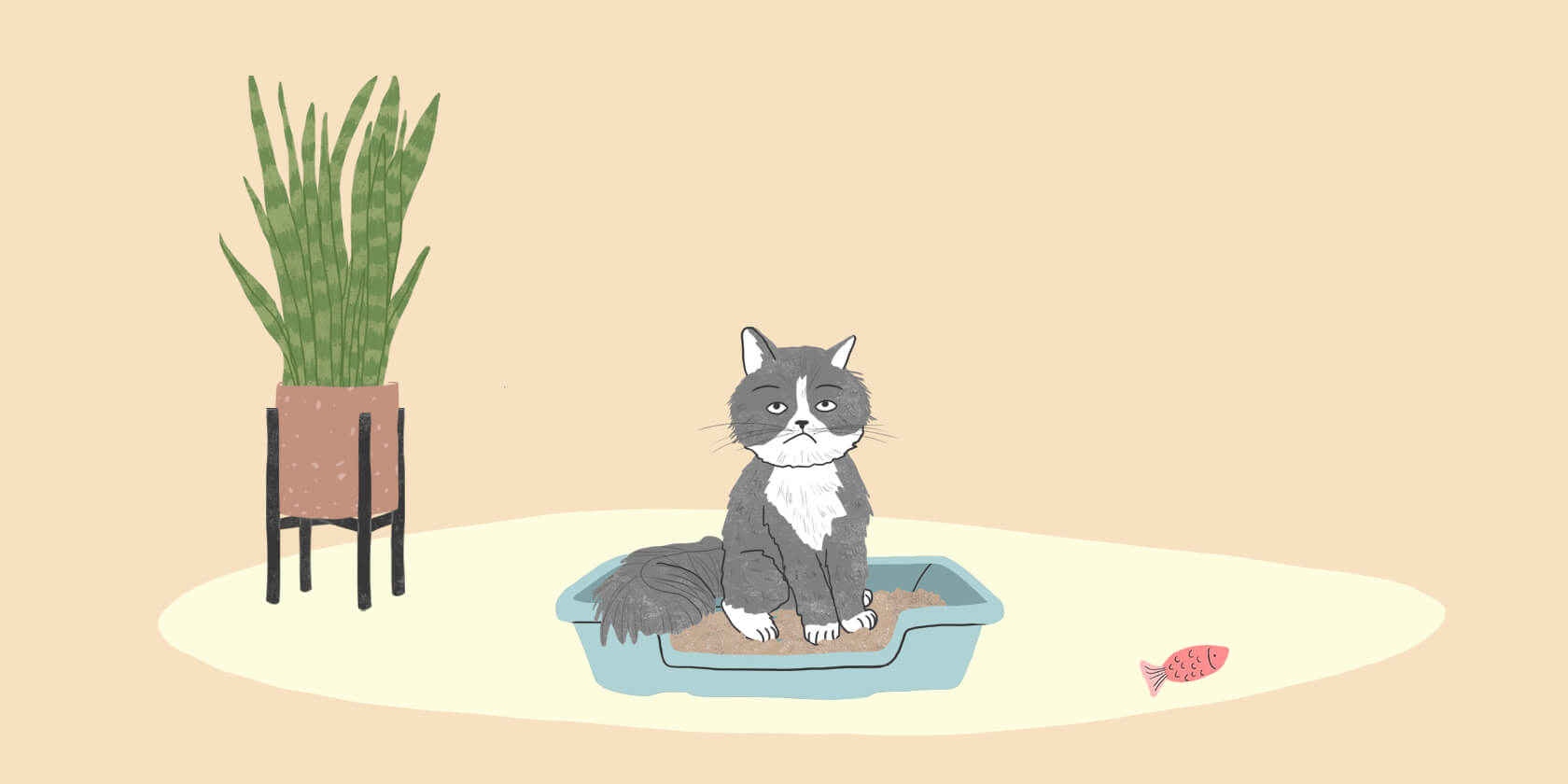
In 2019, a study was conducted by researchers at the University of Montreal to develop a Feline Grimace Scale[1]. Cats with naturally-occurring pain were closely observed, and by evaluating the cat’s ear position, amount the eyes were closed, muzzle tension, whisker direction or change, and head position — all defined as “action units” — a total score can be calculated. This tool, along with other indicators of pain, can be used to quickly and easily assess the level of pain your cat may be experiencing.
Using the Feline Grimace Scale is generally simple and straightforward, and something you might be able to learn yourself. But remember, your veterinarian is the expert and will work with you decode your cat’s facial expressions and other pain indicators. No one action item, physical expression, or behavior alone is an indicator of pain. Your cat needs to be evaluated as a whole and in context to fully determine if your cat could be hurting.
To use the Feline Grimace Scale, you will first need to download the simple training manual and follow the instructions. In it, you will see pictures and drawings of cats such as are shown below, and you then need to compare your cat’s face to those examples and rate each element of your cat’s facial expression from 0 to 2. It might help to take photos or video of your cat so that you can match their facial expressions against the examples. These can then be shared with your veterinarian to determine what the scores mean. This assessment may be an indicator of pain, but these changes may also be due to something other than pain. You should consult with your veterinarian to see if the assessment is needed.
Here’s how you would score your cat’s possible pain level:
- 0 = Action unit is absent. In other words, you don’t see any change or signs of tension in the ears, eyes, muzzle, whiskers, or head position that would indicate pain.
- 1 = Moderate appearance of the action unit, or you’re not sure. If you see (or think you see) slight changes to the ear position, tightening of the eyes, straightening of the whiskers, or tension in the nose and mouth, your cat may be experiencing some pain, and a veterinarian should be consulted.
- 2 = Obvious appearance of the action unit. You see significant changes to the position of the ears and head, and tension in the eyes, muzzle, and whiskers indicating your cat is in pain. You should make an appointment to see a veterinarian right away.
If the final total score is 4 or greater, your veterinarian may recommend further diagnostic testing and/or pain management.
Ear Position
Ears can be a revealing indicator of a cat’s emotion. They can range from alert and facing forward when a cat is doing well and interested, to being flattened and rotated outwards. Although the latter can be an indicator of pain, it’s usually also present when a cat is experiencing fear.
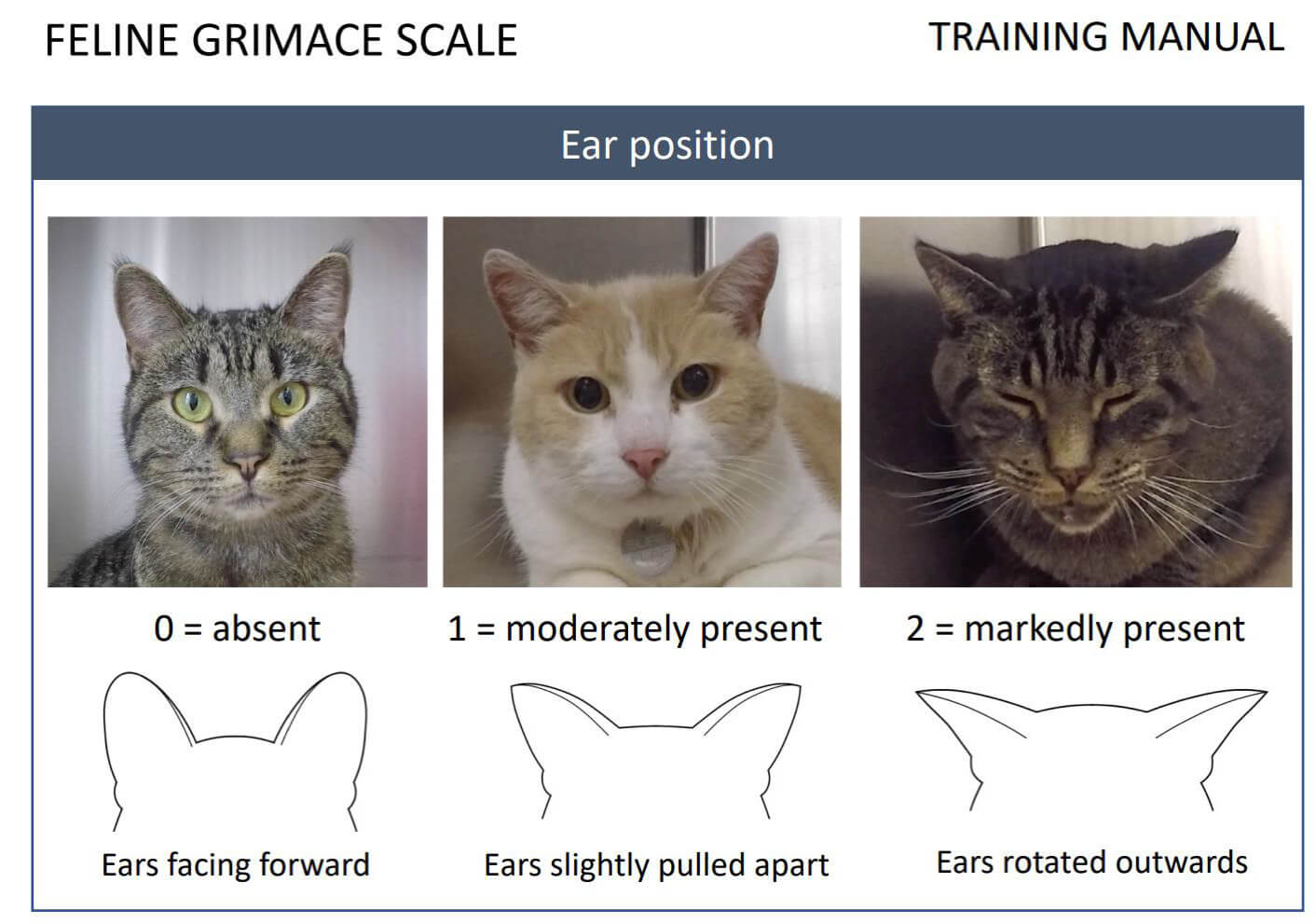
Orbital Tightening
The closing of the eyes, or orbital tightening, starts with no indication of pain if they are wide open. As pain increases, they close to the point of squinting. However, this can also be an indicator of pleasure, such as a welcomed chin or butt scratch that expresses the cat’s appreciation for this action. Therefore, the context should be taken in perspective (e.g., if the cat is sleeping or is actually in pain).
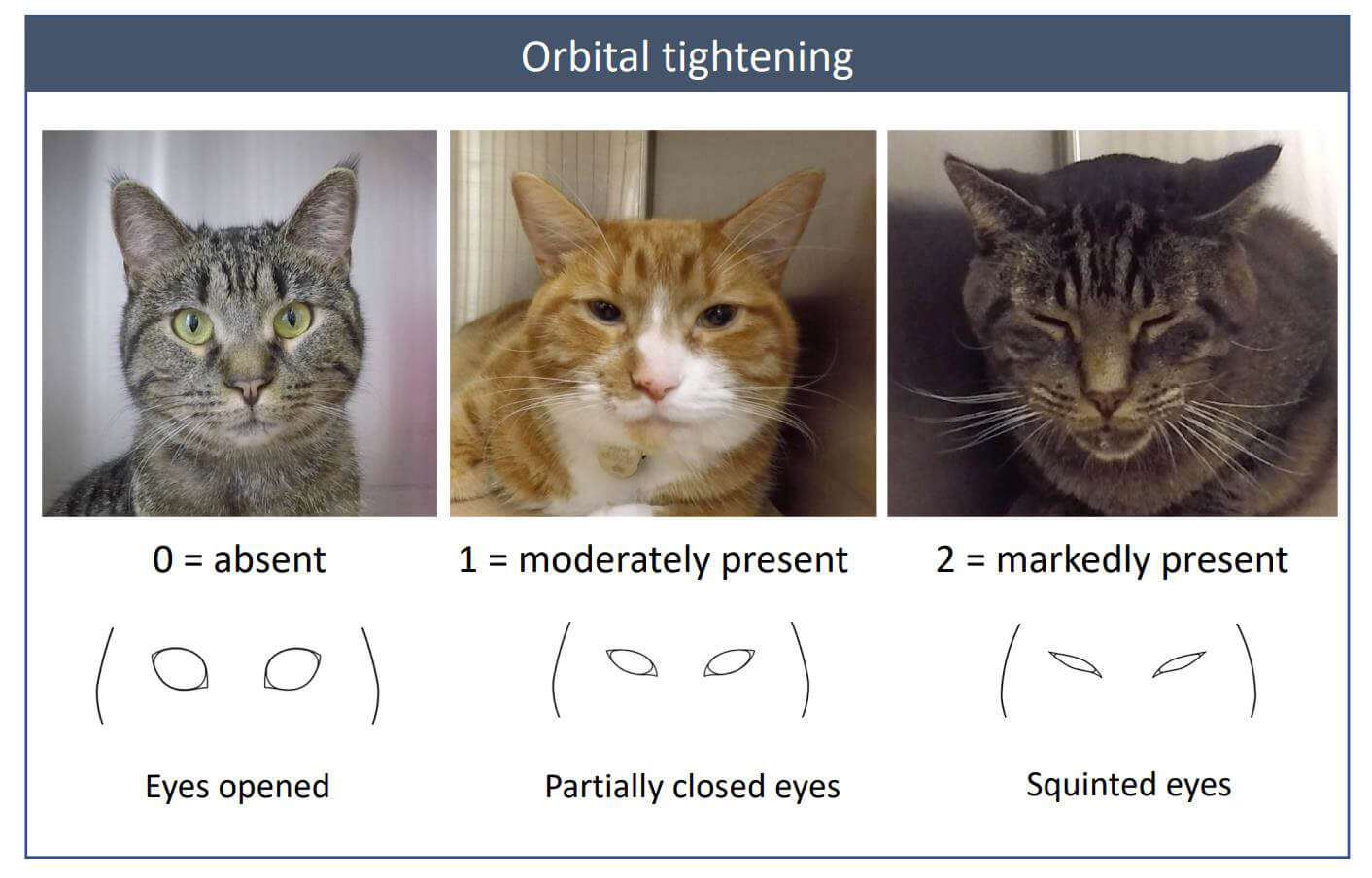
Muzzle Tension
The muzzle tension goes from a relaxed, round shape when pain is absent to a more tense, elliptical shape as pain becomes worse.
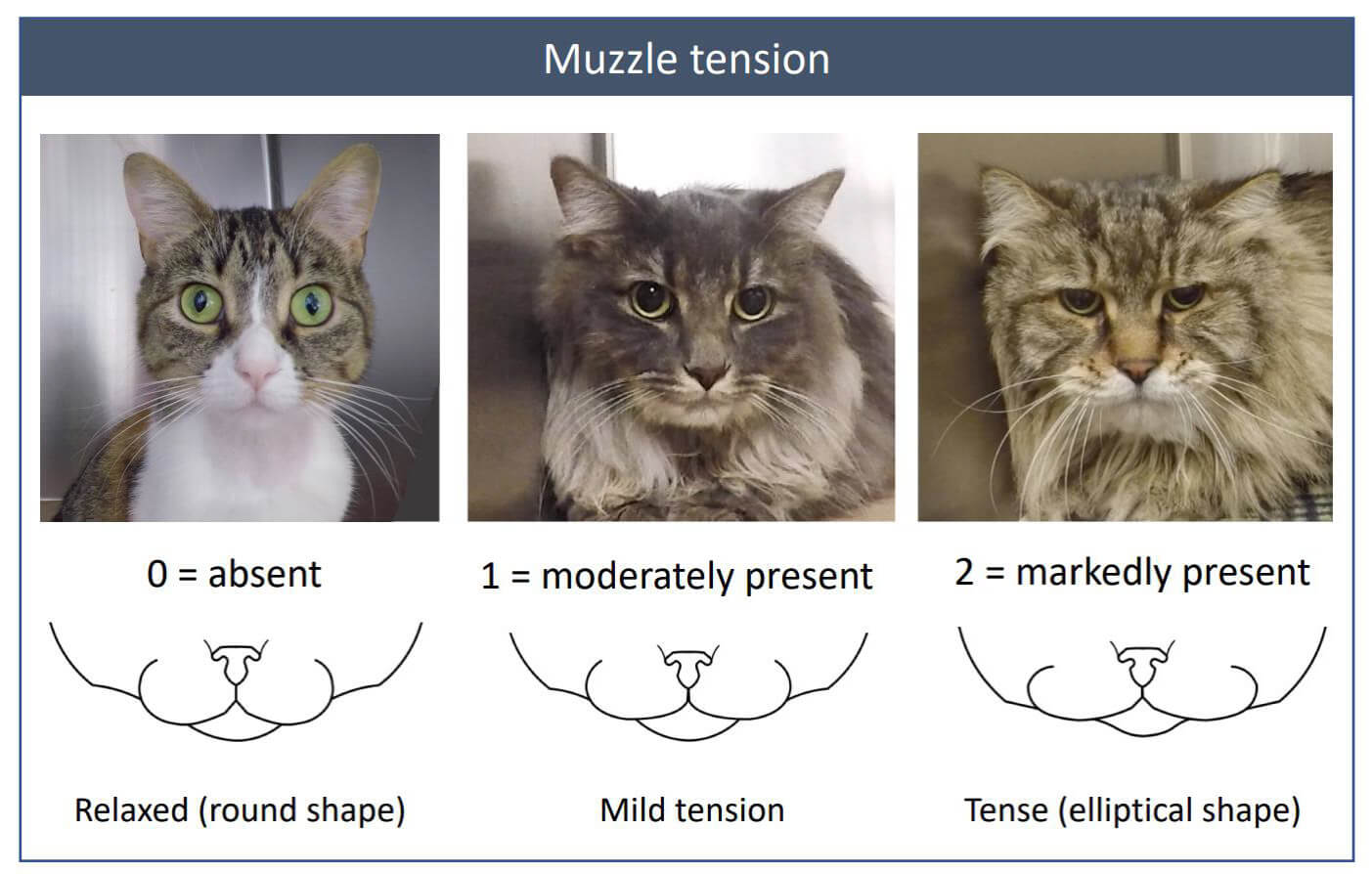
Whisker Change
The appearance of a cat’s whiskers changes with pain too. The whiskers of cats who are not experiencing pain are loose and curved toward the ground. Pain can cause the whiskers to straighten, appear closer together, and move away from the face. Be aware that whisker position can mean other things too. For example, if they are pushed forward, they could be excited and alert; if flattened against their cheeks, they could be angry or scared.
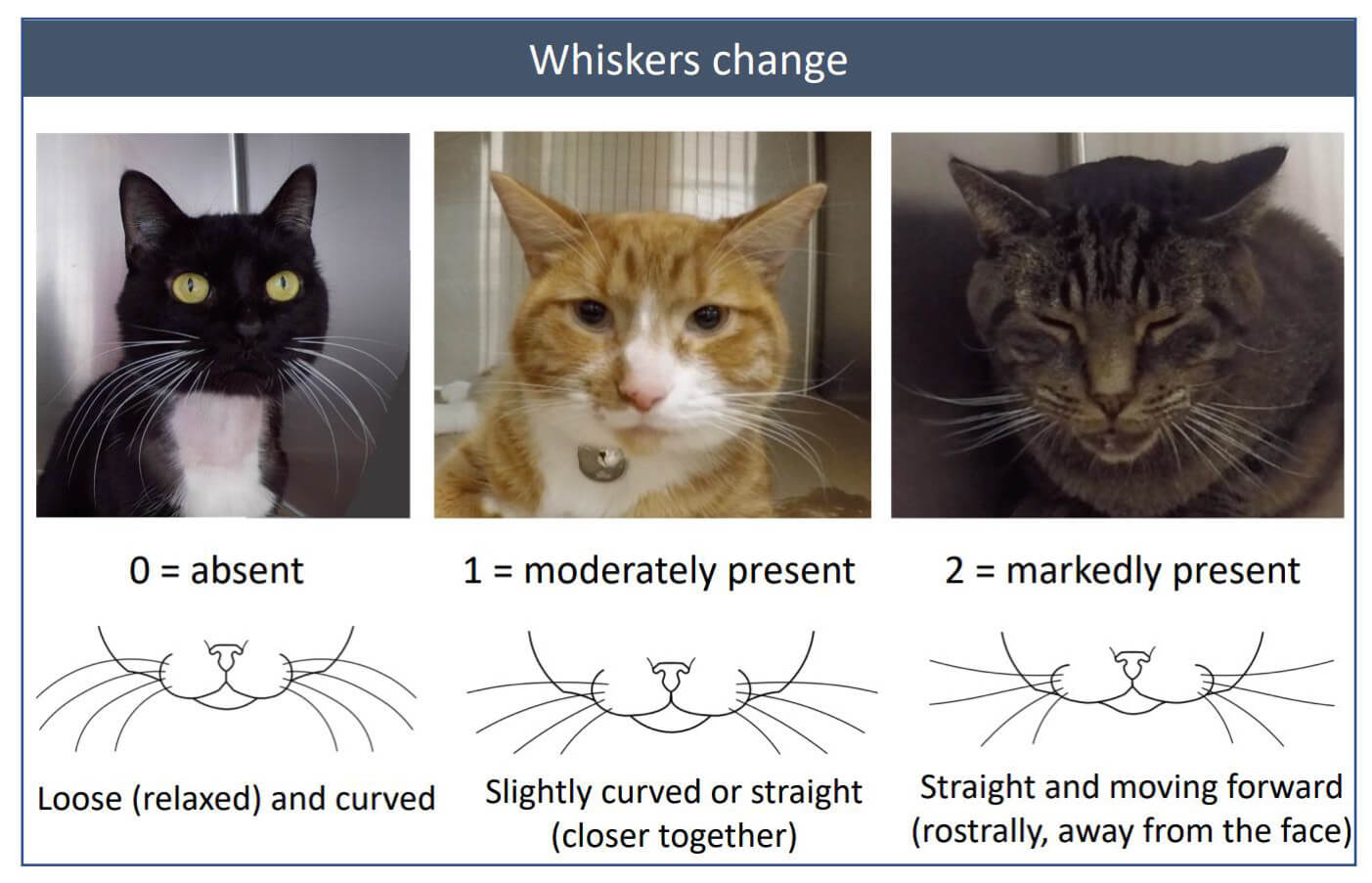
Head Position
When a cat is sitting or lying down (not sleeping), head position is based on alignment with the shoulders. A head above the shoulders indicates no pain, while a head that’s drooping and either in line with the shoulders, positioned below the shoulders, or titled down signals pain.
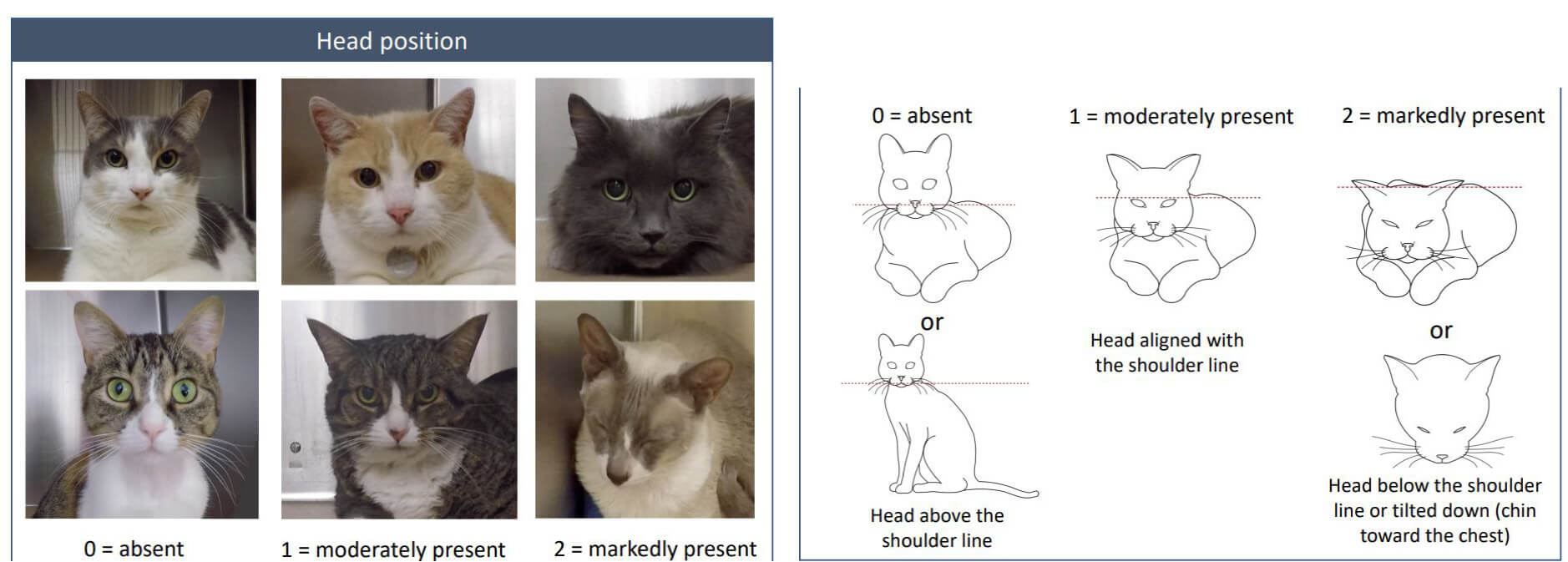
How Much Pain is My Cat Feeling?

- No pain. If your cat looks like the first picture, with their ears facing forward, eyes fully open, relaxed mouth and nose, loose and curved whiskers, and head held high above the shoulder line, then you likely have a pain-free cat!
- Moderate pain. If your cat’s ears are turned slightly to the side, eyes partially closed, some tension in the nose and mouth, whiskers that are straighter rather than curved, head down at shoulder level, then your cat may be experiencing a moderate amount of pain, just like the cat in the second picture.
- Severe pain. Nobody wants their cat to experience this level of pain. If your cat looks like the one in the third picture, where the ears are flat and turned outward, squinting eyes, tense nose and mouth, whiskers straight and forward, head low and pulled in toward the chest, then immediate veterinary care is needed.
When to Seek Veterinary Care for Your Cat’s Pain
If you suspect your cat might be in pain, then you can do an assessment of your cat’s facial expressions using the scoring method from the Feline Grimace Scale. If the total score is more than 4 out of 10, then pain management might be warranted, and you should seek veterinary care right away. Also, consider whether you've seen any other physical or behavioral signs of pain. If you have any doubts, take your cat to your veterinary clinic for a professional opinion and examination. There's much that can be done to manage cat pain so that our feline companions do not have to suffer.
ZPC-01017
IMPORTANT SAFETY INFORMATION: For use in cats only. Women who are pregnant, trying to conceive or breastfeeding should take extreme care to avoid self-injection. Allergic reactions, including anaphylaxis, could potentially occur with self-injection. Solensia should not be used in breeding cats or in pregnant or lactating queens. Solensia should not be administered to cats with known allergy to frunevetmab. The most common adverse events reported in a clinical study were vomiting and injection site pain. See full Prescribing Information.
INDICATION: For the control of pain associated with osteoarthritis in cats.
- Evangelista, M.C., Watanabe, R., Leung, V.S.Y. et al. Facial expressions of pain in cats: the development and validation of a Feline Grimace Scale. Sci Rep 9, 19128 (2019). https://doi.org/10.1038/s41598-019-55693-8
